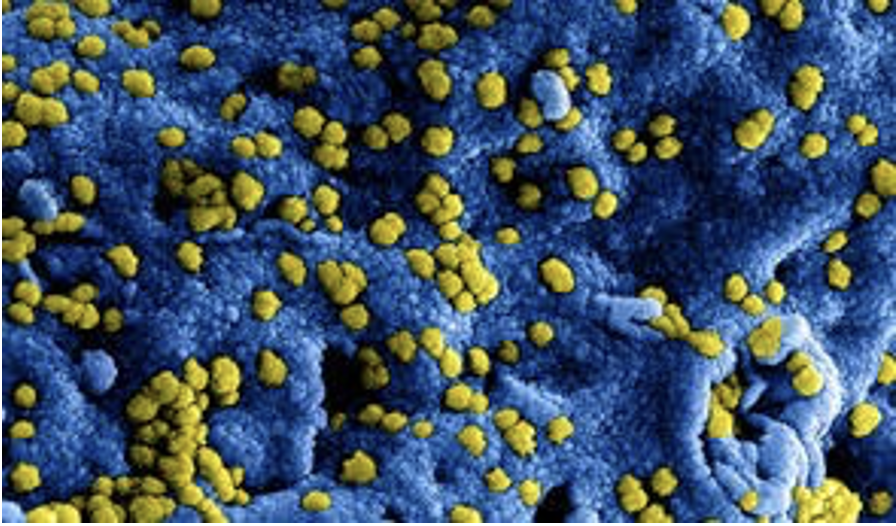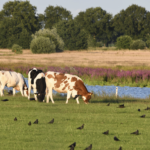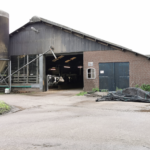First published: May 6, 2020
This is the second blogpost in our series of blogposts related to the corona virus. The first one can be found here
By Dr. Marie Petersman, Postdoctoral Research Fellow (Swiss National Science Foundation) based at the Copernicus Institute of Sustainable Development, Utrecht University, and Anna Berti Suman, PhD candidate Tilburg Law School
Over the past weeks, a plethora of articles explored the relations between the corona crisis and the climate catastrophe by framing the former as an opportunity to learn lessons for tackling the latter. Among the firsts was an essay by Bruno Latour, inviting us to address the current pandemic as a ‘dress rehearsal’ that incites us to prepare for climate change. Elsewhere, Latour argued that the pandemic had ‘actually proven that it is possible, in a few weeks, to put an economic system on hold everywhere in the world and at the same time, a system that we were told it was impossible to slow down or redirect’. Yet, despite the fact that both events constitute globally shared ‘collective’ experiences, immediate societal responses to them vary greatly. While both events are partially intertwined in their causes and effects, their differences in spatio-temporal scales and socio-ecological implications make socio-political responses to them difficult to compare.
Of course, this is not to say that links between the two events do not exist. The outbreak of the zoonotic coronavirus is entangled with multiple and often interacting ‘threats to ecosystems and wildlife, including habitat loss, illegal trade, pollution, invasive species and, increasingly, climate change’. On a positive note, we observed a widely shared enthusiasm among the climate scientific community when the measurements of the European Copernicus agency registered an unusual drop in nitrogen dioxide levels in February 2020, as analysed by NASA’s ground observation team. The coronavirus is indeed set to have caused the ‘largest ever annual fall in CO2 emissions’, more than during any previous economic crisis or period of war. Studies also showed, inversely, that low levels of air pollution may be a key contributor to prevent Covid-19 deaths. Finally, the plunging demand for oil wrought by the coronavirus was said to have permanently altered the course of the climate catastrophe. As a result, after 2019 being coined ‘the year of climate consciousness’ with a ‘growing momentum’ for climate activism, the current drop of atmospheric pollution was welcomed as a windfall by many. A call for caution was, however, voiced by those who plead for more nuance and refrain from granting agency to the virus itself, pointing instead to the temporary retreat from capitalism’s ‘industrial production and its handmaidens’ to explain the current low emissions. Although praised by many as a ‘catalyst for transformation’ that brings about ‘an unprecedented opportunity to rethink how our beliefs, values, and institutions shape our relationships’, on the long run, the economic crisis triggered by the coronavirus may well lead to a suspension of adopted and prospective climate measures. Circular economists and de-growth advocates also pointed to the short-term risks that the pandemic may trigger by increasing the use of private transportation means or the consumption of single use plastic (including gloves, masks and disposable cups in bars). This has led certain cities, such as Amsterdam, to pro-actively consider the ‘“doughnut” model to mend the post-coronavirus economy’, bearing in mind that ‘calls for solidarity with the weak and disadvantaged must be part and parcel of [such] shifts’. Ultimately, the fact that even in a world that has come to a halt, we still fall short of the emission targets needed to keep global warming from surpassing 1.5 degrees Celsius above pre-industrial levels, shows the structural and systemic deficiencies we need to deal with and signal ‘how much further there is to go’.
Whether or not the corona crisis will be beneficial for tackling climate change on the long run beyond the immediate drop in atmospheric pollution remains, thus, a question open to debate, which outcome will dependent on the political will of states, corporations and citizens. Our purpose here is not to add one more proposal to the existing ‘menu’ of policy goals for the post-corona time to come. Neither do we wish to celebrate the environmental impact of the corona crisis, which feels inappropriate at a time when many are suffering from the disease and its related harms (from dead relatives that could not be buried, bodies that decomposed in trucks for overflow storage in funeral homes, unprecedented unemployment rates, soaring queues before food banks or unaffordable medical bills) and others are sacrificing themselves ‘at the front’ of the health emergency. Instead, our objective is to explore how the turn to sensingas a distinctive mode of engagement with socio-ecological issues can be productive to (re)imagine and address ongoing events such as the coronavirus and climate change. In line with Fleur Johns, ‘[s]ensing, in this context, refers to the work of eliciting, receiving, and processing impressions and information, both in the mode of intuitions or feelings, and in terms of data’ – it ‘includes all bodily faculties of perception, but is not restricted to corporeal sensation, individual or collective’. Sensing, as such, ‘is never just about the body, as distinct from the mind’ (Johns, at 60-61). In the next section, we start by theoretically defining and elaborating on the potential of sensing as a way to cope with events like the current pandemic and climate change, which call for a different (re)configuration of existence. We see the turn to sensing as responding to Donna Haraway’s invitation to ‘stay with the trouble’ of living and dying together on a damaged earth, perceived as more conducive to the kind of thinking that would provide means to build more liveable futures. We then turn to specific examples of ‘citizen sensing’ initiatives and conclude by questioning how the insights drawn from such ‘sensing practices’ can be fruitful to cope with the risks associated to the corona crisis and climate change.
Sensing the Unknown
Both the coronavirus and climate change are examples of ‘hyperobjects’ – a term coined by philosopher Timothy Morton to refer to entities that are so massively distributed in space and time that they defy not only our understanding but also our control. The coronavirus cannot be seen, yet its latent presence is everywhere. Gone pandemic, the coronavirus cannot be contained nor controlled, only its effects can be mitigated through specific ‘guidelines’ and ‘physical distancing’ (a survival tool revealing inequalities that span across class, gender, race and mental healthdimensions). Similarly, climate change affects us all (unequally), despite it being ‘almost impossible for changes in climate to be perceived through individual experience’ (Bauer and Bhan, at 19). Both the coronavirus and climate change share the characteristics that Morton ascribes to hyperobjects: they are ‘viscous’ (they ‘stick’ to us); ‘nonlocal’ (their overall effects are globally distributed across space and time); ‘phased’ (we can only experience local manifestations of them at any one time and place) and ‘inter-objective’ (they are intertwined with other objects to which they cannot be reduced). Their reality and existence challenge human perception and imagination. The objects under concern remain, in other words, elusive or invisible, although their reality is unquestionable. While they defy, as a whole, immediate and unmediated human experience, we can, however, sense their existence and omnipresence.
Against this backdrop, speculative approaches dispense with necessary (phenomenological) correlations between knowledge and first-person experience, and recognize the limits of human thought and imagination to relate to events or entities that humans do not perceive directly. They invite us, instead, to empathically relate to such events and sense their effects even without unmediated access to them. While the realm of ‘experience’ is limited to ‘actual observations’ and the process of ‘learning by practical trial or proof’, the definition of ‘sense’ alludes to the ‘faculty of perception [and] feeling’. As such, it refers both to the detection of certain parameters and the emotions associated with what is revealed. Seen through this prism, sensing aspires to emotionally relate to the distress caused by certain events, whether the harm directly or only indirectly impacts us as human being. In other words, it is an invitation to engage creatively, imaginatively and speculatively with such events beyond immediate human representation and experience, in order to sense their constantly present and emerging effects in the sphere of the actual. As Morton puts it, the mere fact of thinking their existence – or sensing their effects – requires us to care about such hyperobjects.
From a governance perspective, a number of studies showed how a turn to sensing can be productive to re-envisage political perspectives and legal approaches to reconsider the more-than-human world we inhabit. As elaborated by David Chandler, sensing as a form of governance is based on correlation rather than causation, and depends on the disposition to ‘see things in their process of emergence or in real time’ (Chandler, at 22). The deployment of sensing through new technologies can play a decisive role in environmental politics, by inspiring awareness and mobilizing publics. These forms of ‘material participation’ can facilitate the capacity to detect the effects of relational interactions and cast them as either problems or possibilities. As such, ‘biosensory techniques’ can make ‘imperceptible harms perceptible’, ‘knowable’ and ‘measurable’ and permit ‘a growing awareness of planetary life’ (Johnson, at 284-285). By producing ‘forms of correlational sight’, the effects of interactions between entities are rendered perceptible, and enable ‘new forms of (datafied) relational awareness’ (Chandler, at 130). At a local level, the use of sensory technologies by individuals or communities allows for grassroots-driven, bottom-up and auto-empowering engagement with and responsivities to certain threats. Such engagements ‘“empower” citizens by shifting the infrastructures, technologies and practices of monitoring to less institutionalised arrangements’ (Gabrys, at 177). From this perspective, ‘sensing citizens’ are seen as part of ‘material-political arrangements and struggles over who generates, legitimizes, and has authority over data and how data is mobilized to make claims for environmental and other rights’ (Ruppert, Isin and Bigo, at 6). With the burgeoning trend towards a ‘digitalization of mainstream environmental and climate governance’ (Bettini et al., at 2), technology plays a key role in the constitution of socio-ecological assemblages, and promotes a novel ontology that changes the very nature of liberal governance (Beraldo and Milan, at 1). Citizens using sensing technologies are thereby recast as a ‘geo-socially networked community of sensors’ (Chandler, at 158). As such, they are able to ‘make visible politically masked risks’ and claim back their agency in shaping responses to the socio-ecological issues at stake. In the next section, we will explore how forms of ‘citizen sensing’ can facilitate individuals and communities who are sensitive to the material, interdependent world they are part of, to act as proactive agents in their own governance and through responsive care.
Citizen Sensing: From Sensing Radiations to Covid-19
In the immediate aftermath of the disastrous earthquake and tsunami that struck eastern Japan on 11 March 2011 and the subsequent meltdown of the Fukushima Daiichi Nuclear Power Plant, accurate and trustworthy radiation information was publicly unavailable. Against this backdrop, a volunteer-driven non-profit organization called Safecastwas formed to enable individuals ‘to monitor, collect and openly share radiation measurements’ and other data on radiation levels. The initiative ‘mobilized individuals and collectives’ in response to risks that were perceived as extremely urgent to monitor, namely the post-Fukushima radiations burdens. Safecast can thus be regarded as a ‘shock-driven’ initiative that constitutes a ‘successful [example of] citizen [sensing] for radiation measurement and communication after Fukushima’. As this initiative grew quickly in size, scope and geographical reach, Safecast’s mission soon expanded to provide citizens worldwide with the necessary tools they need to inform themselves by gathering and sharing accurate environmental data in an open and participatory fashion. Through a form of ‘auto-empowerment’, Safecast participants were able to monitor their own homes and environments, thereby ‘free[ing] themselves of dependence on government and other institutions for this kind of essential information’. As described on Safecast’s website, this process gave rise to ‘technically competent citizen science efforts worldwide’.
(image credit: Safecast and Ushahidi (CC))
Following the outbreak of Covid-19, the Safecast collective engaged in a rapid response to the virus by setting up an information platform on the evolution of the crisis and a map of Covid-19 testing that provides a picture of where to obtain testing options in various locations (see covid19map.safecast.org). Over the years, Safecast had accumulated much experience and insights on ‘trust, crisis communication, public perception, and what happens when people feel threatened by a lack of reliable information’. Yet, the Safecast collective still struggles to be heard as ‘many scientists ignore their data’. Despite this scarce official recognition, Safecast took advantage of its experience and societal impact to rapidly respond to the current pandemic. As observed by Safecast volunteers, ‘[w]e find ourselves again trying to better understand what is happening’. In a webinar on ‘Lessons we are learning from the Covid-19 pandemic for radiological risk communication’, Azby Brown (as volunteer at Safecast and director of the Kanazawa Institute of Technology’s Future Design Institute in Tokyo) drew several links between the nature of ionising radiations and the coronavirus. By alluding to the invisible presence and constant risks posed by such hyperobjects, the invitation to the webinar started by highlighting that ‘[y]ou can’t see, smell, or taste it, but it may be a problem’, which applies equally to radiations as well as viruses. Elsewhere, Brown observed that:
Fear of the unknown is normal, and radiation and viruses are both invisible threats that heighten anxiety. Most people have almost no way to determine for themselves whether they have come into contact with either of these threats, and they find themselves dependent on specialists, testing devices, and government and media reports. If the government and media do not provide clear, credible explanations and prompt communications, misinformation and mistrust can easily take root and spread.
For Brown, Safecast could provide a relevant risk communication perspective in the current Covid-19 context based on the experience gained after the Fukushima disaster. Despite major differences between ionising radiations and Covid-19, similarities in risks communications are worth exploring. Analogous governmental failures on risk communication were observed regarding, for example, shortcomings in rapidly conveying clear messages to the public and communicate strategies based on non-conflicting expert and policy opinions. The ambiguous and incomplete information received from the authorities generated a sense of uncertainty and distrust for many citizens dependent on single sources of official information. Against this backdrop, initiatives such as Safecast that enable people to control and monitor the presence and degrees of certain risks provide an alternative source of credible crowdsourced information. Beyond the immediate informational benefit for sensing citizens, such tools can further enable holding governments and officials into account.
At the time of writing, citizen sensing initiatives tackling Covid-19 are multiplying around the world (as listed here and here or exemplified here). Such citizen sensing practices ‘constitute ways of expressing care about environments, communities and individual and public health’ (Gabrys, at 175). As argued by Gabrys, these practices ‘are not just ways of documenting the presence of [threats]’ but are also ‘techniques for tuning sensation and feeling environments through different experiential registers’ (Ibid, 177). Granular monitoring by sensing citizens is seen as particularly valuable in times of emergencies, when governments are faced with urgent, massive and systemic risks of spatial and temporal scales that defy immediate control – such as the current pandemic. Civic ‘sentries’ can both offer relief to affected people through solidarity networks and provide resources to policy-makers and scientists through wider access to grassroots-driven and situated information ‘from below’. Citizen sensing initiatives also enable lay people, turned into ‘sensing citizens’, to retain a greater degree of agency over the production and use of the data assembled. Against the ever-increasing rise of ‘bio-surveillance states’ and the development of ‘symptoms-tracking’ and ‘contact-tracing’ apps, ‘bottom-up innovations’ might help to counter the acceleration of ‘digital surveillance’ that may be hard to scale back after the pandemic. Open access citizens’ sensed data may be considered more transparent and trustworthy by the public and convey important information on widely shared everyday lived experiences. By rendering data about real but invisible threats (and how these are perceived and felt) available through the intermediary of sensing citizens, a redistribution of (access to) information and agency in knowledge production is enabled. Finally, the increased ‘(datafied) relational awareness’ and ‘forms of correlational sight’ (Chandler, at 130) that are produced can create new appreciations of inherent yet invisible connections between human and non-human coexisting lifeforms.
Concluding thoughts
As hyperobjects, both the coronavirus and climate change defy not only our understanding but also our control. Their causes and effects are so massively dispersed across space and time that they evade unmediated appearance. The impacts of hyperobjects operate through forms of ‘slow violence’, which are ‘often attritional, disguised, and temporally latent, making the articulation of slow violence a representational challenge’ (Davies, at 2). Only partial, local and deferred manifestations can be captured through experience. Our way of relating and responding to such hyperobjects depends on temporal, spatial and emotional predicaments. The more temporally immediate, spatially proximate and emotionally tangible the threats of hyperobjects are, the greater and quicker our responses tend to be. Temporal, spatial and emotional scales are central to our ability to sense the presence of invisible threats such as viruses and changes in the climate.
While socio-ecological threats posed by climate change have been present for decades and increasingly materialized across the globe in recent years (for certain peoples more than others), responses remained relatively marginal in light of the risks at stake. Conversely, while the (health) threats posed by the coronavirus are of a relatively shorter-term (leaving aside the longer-term consequences of the socio-economic crisis it engendered), those risks triggered immediate and radical responses. The fact that the coronavirus is sensed as a ‘direct risk’ to individuals or vulnerable relatives prompts instant reactions. The sensed proximity (both temporal and spatial) of the invisible threat points to important questions. The current pandemic brought to light what climate activists deplored for long, namely that we tend to care more for risks posed to our individual conditions. A sense of emotional distance is generated by spatial and temporal gaps. This self-centred sentiment is reinforced by an anthropocentric appraisal that limits our ethics of care to the sole concern for the human species, instead of striving to ‘support the flourishing of other animals and natural things’ with which we are intrinsically entangled. While pessimistic projections on climate change have often been framed as triggering a sense of denial, paralysis or aporia, the current pandemic shows how emotions such as fear, anxiety and dread can also lead to mobilization, collective concern and action. Emotions are, ultimately, about social movement, stirring and agitation: the root of the word ‘emotion’ is the Latin emovere, which implies both movement and agitation. Despite serious risks of strategic exploitation of fear or despair by political actors instrumentalizing a ‘state of exception’, such emotions can also unleash an enhanced sense of solidarity and cohesion through increased awareness of our fragile state of coexistence and new forms of collective attachment. This is true at the human level – as we saw emerging a myriad of new forms of ‘social proximity’ – but also at a ‘more-than-human’ level, by inviting to be alert and attentive to ‘humans’ impact on and interdependence with the ‘natural’ world we are part of. Such sensibilities can give rise to a sense of cross-species shared vulnerability, where hope and grief enable to re-envision different forms of ‘collaborative survival’ (Tsing, at 4). In this short blogpost, we did not tackle any of these ethicalquestions in depth. More modestly, we explored how citizen sensing initiatives can help bridging the temporal, spatial and emotional distance between human (re)actions and present, yet invisible, threats through self-production of independent knowledge and agency. As Gabrys reminds us:
These practices are not just ways to rework the data and evidence that might be brought to bear on environmental problems. They are also ways of creating sensing entities, relations, and politics, which come together through particular ways of making sense of environmental problems (Gabrys, at 732).
We argued that, by recasting the actants and subjectivities involved, the technological and data-based sensors used by ‘sensing citizens’ have a world-making effect by facilitating awareness and intelligibility of certain threats. While physical isolation is being implemented (almost) globally, this doesn’t mean that we need to feel isolated and powerless. Daily citizen science is all about re-imagining scales and the potential of working together to provide a sense of connection and purpose. In reconfiguring the ‘distribution of the sensible’ – as a ‘system of self-evident facts of sense perception that simultaneously discloses the existence of something in common and the delimitations that define the respective parts and positions within it’ (Rancière, at 12) – new avenues are opened up for citizens to foresee, understand and visualize threats, and ‘(ac)count’ the damages caused (Bettini et al., at 6 and 8). Beyond the realm of immediate perception and individual or collective (re)actions, decentralized, grassroots-driven and cooperative sensing technologies may also redistribute agency to challenge more ‘official’ monitoring infrastructures and hold actors into account to galvanize appropriate political responses. Politics, ultimately, ‘revolves around what is seen and what can be said about it, around who has the ability to see and the talent to speak, around the properties of spaces and the possibilities of time’ (Rancière, at 13). These configurations of the sensible, we argue, provide an important terrain for rethinking the politics of hyperobjects such as the coronavirus and climate change.



